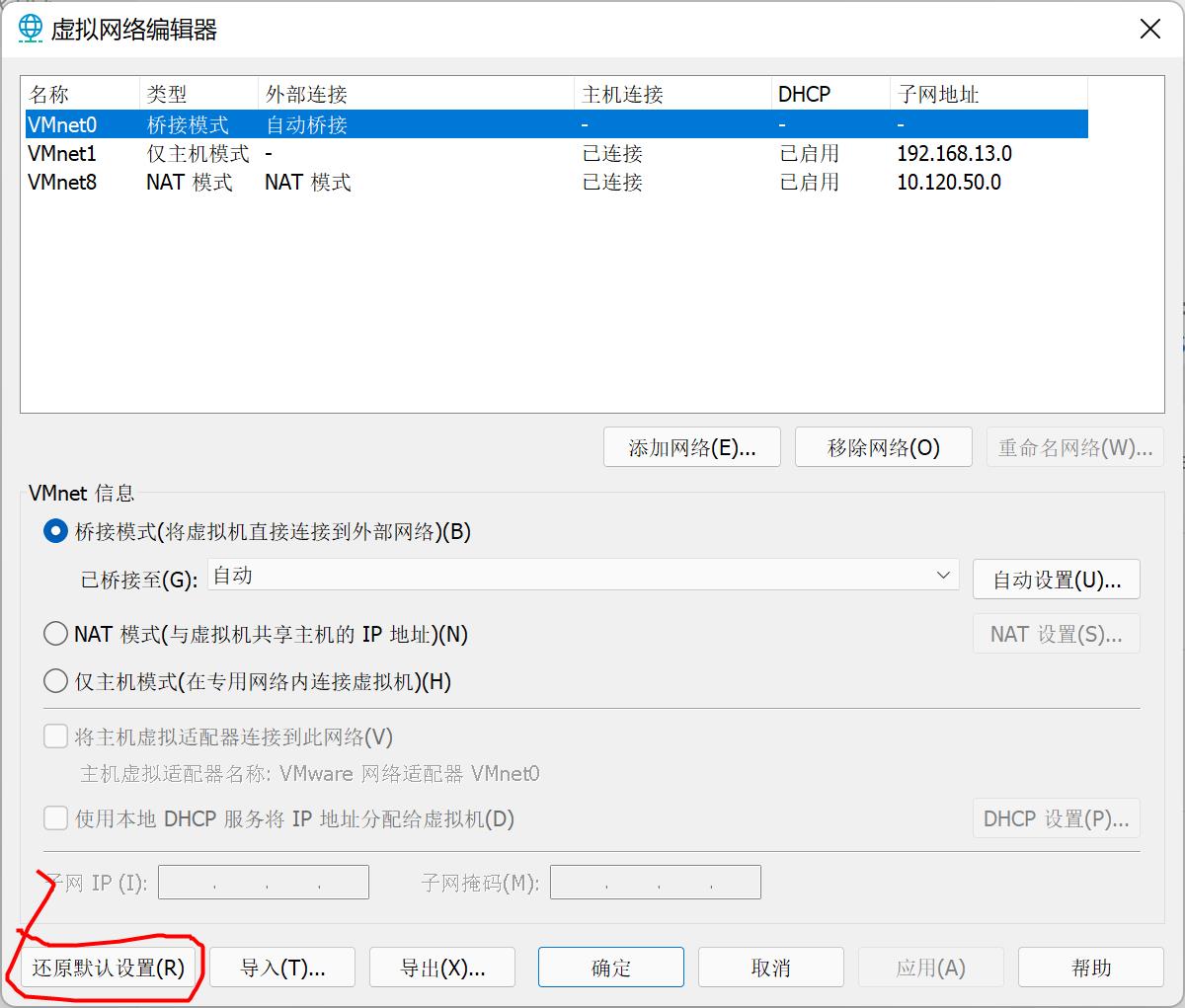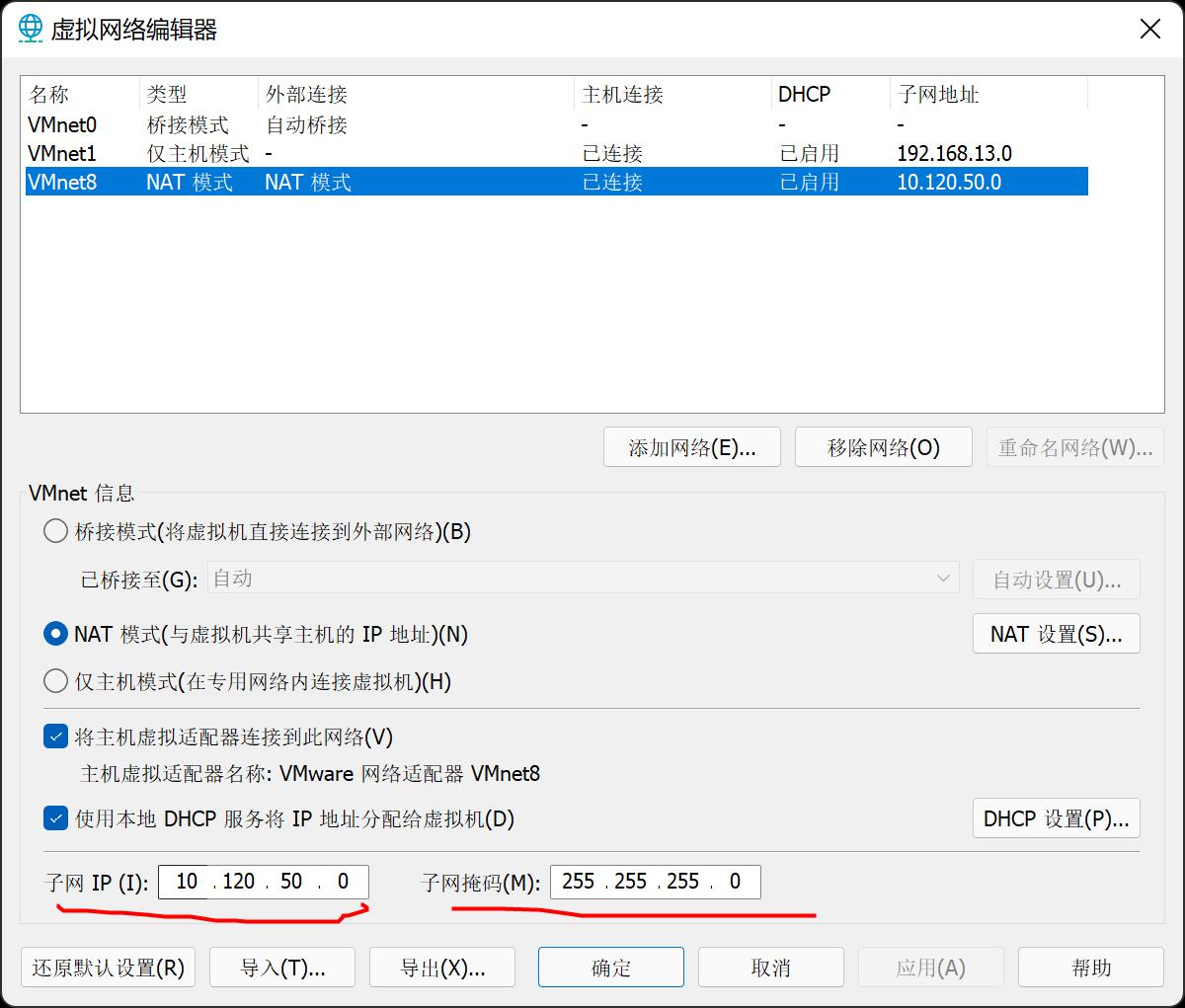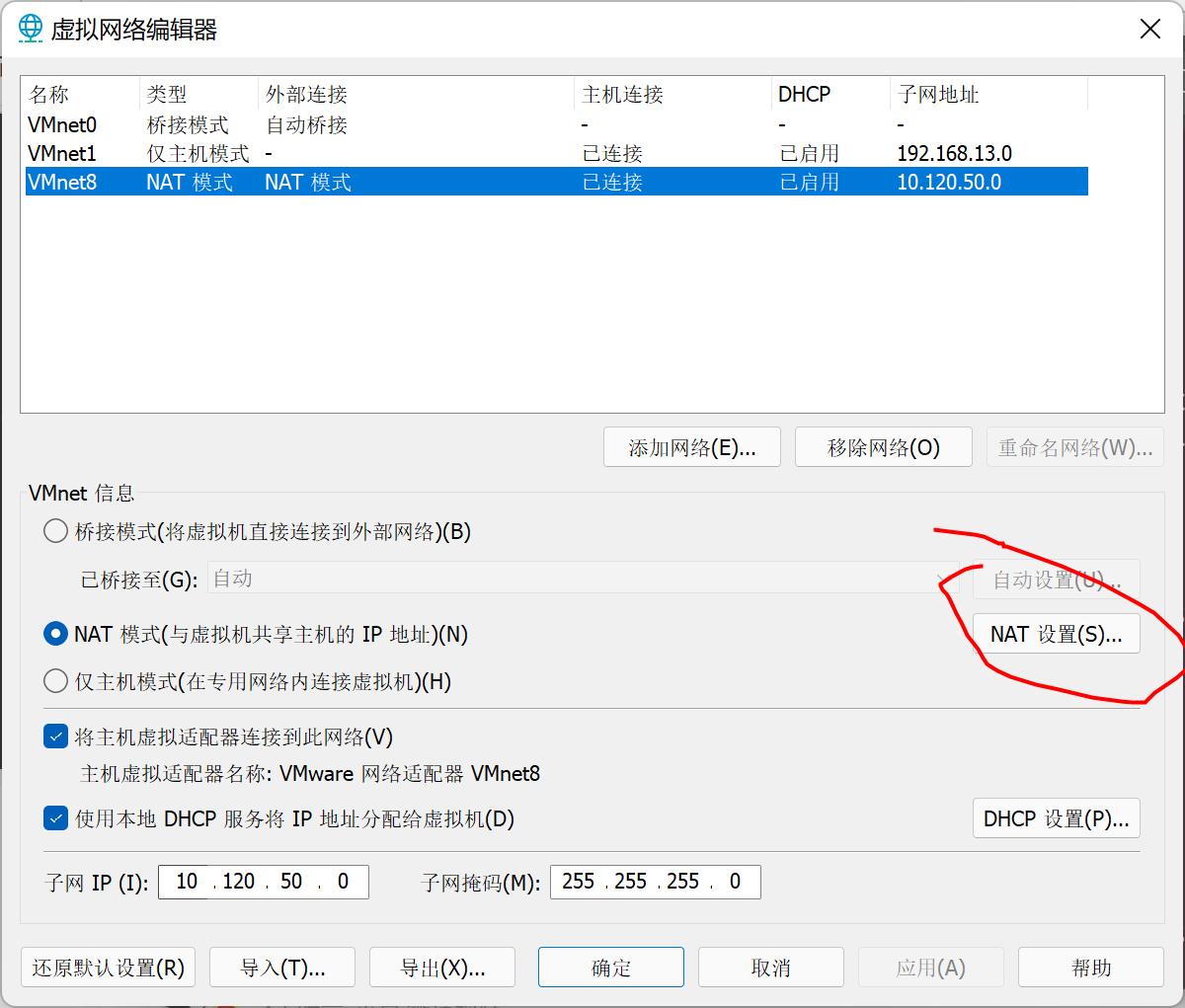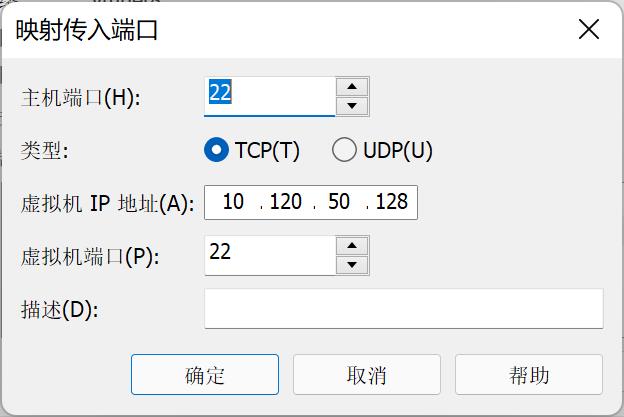SSH连接Ubuntu虚拟机失败:The remote system refused connection
Posted
tags:
篇首语:本文由小常识网(cha138.com)小编为大家整理,主要介绍了SSH连接Ubuntu虚拟机失败:The remote system refused connection相关的知识,希望对你有一定的参考价值。
参考技术A VMvare安装了Ubuntu 14.04虚拟机,使用secureCRT SSH远程连接虚拟机失败,报错为”The remote system refused connection“参考: http://blog.csdn.net/lifengxun20121019/article/details/13627757
1. 安装openssh-client
Ubuntu默认缺省安装了openssh-client,apt-get安装即可
2. 安装openssh-server
在服务器(Ubuntu虚拟机)上安装SSH服务器端
3. 启动ssh-server
4. 确认ssh-server工作正常
看到ssh,表示工作正常;或者
看到ssh,sshd,ssh-agent表示工作正常
5. 连接虚拟机
使用secureCRT或xshell等工具连接
6. ssh配置修改
配置路径
可修改ssh服务端口,默认为22,可以修改为222等,然后重启ssh服务
1. 什么是SSH
SSH = Secure Shell = 安全外壳协议,是一种建立在应用层和传输层基础上的安全协议
shell即命令解析器,shell命令存储在操作系统的文本文件中,shell使计算机能读懂用户命令,并对计算机的硬件进行操作
2. SSH的构成
SSH由客户端和服务端软件组成,所以要实现SSH连接,必须在客户端和服务端安装SSH软件,并且开启SSH服务。
客户端包含ssh程序以及像scp(远程拷贝)、slogin(远程登陆)、sftp(安全文件传输)等其他的应用程序。
所以如果你SSH连接失败,或者无法执行scp操作,首先要确认是否安装了SSH软件,并且开启了SSH服务。
windows宿主机ssh连接vmware ubuntu虚拟机
首先获取 windows 宿主机的 ip 地址
win + R 输入CMD
在终端中输入:
ipconfig
找到无线局域网适配器 WLAN
无线局域网适配器 WLAN:
连接特定的 DNS 后缀 . . . . . . . :
IPv6 地址 . . . . . . . . . . . . : 2001:da8:258:d021:dd44:4c86:152b:237a
临时 IPv6 地址. . . . . . . . . . : 2001:da8:258:d021:6da0:966e:4a06:16b8
本地链接 IPv6 地址. . . . . . . . : fe80::dd44:4c87:1527:237b%20
IPv4 地址 . . . . . . . . . . . . : 10.120.50.108
子网掩码 . . . . . . . . . . . . : 255.254.0.0
默认网关. . . . . . . . . . . . . : fe80::1253:72ff:fe36:2f01%20
10.120.0.1
在这里我们要记下IPv4 地址和子网掩码
IPv4 地址 . . . . . . . . . . . . : 10.120.50.108
子网掩码 . . . . . . . . . . . . : 255.254.0.0
配置虚拟机的虚拟网络编辑器
打开vmware ,先不要打开任何一个虚拟机,进入菜单栏,点击编辑,选择虚拟网络编辑器

点击还原默认设置,还原之前的网络设置
再次进入虚拟网络编辑器中
首先点击上部分的NAT模式类型,下图蓝色条状那个

之前记录的ip地址和子网掩码为:
IPv4 地址 . . . . . . . . . . . . : 10.120.50.108
子网掩码 . . . . . . . . . . . . : 255.254.0.0
重点:
子网IP应该填写为:10.120.50.0,最后的那个数字要为0
子网掩码:255.255.255,因为填写进去的子网IP是10.120.50.0,前三部分是不变的
填写完成后,点击确定
再打开虚拟机
查询虚拟机的ip地址
打开虚拟机后,需要查询虚拟机的ip地址
首先需要安装一些软件包:
sudo apt-get install openssh-server net-tools
安装完成后在终端输入:
ifconfig
我的虚拟机显示如下:
# mrcangye @ ubuntu in /etc/ssh [23:38:21]
$ ifconfig
ens33: flags=4163<UP,BROADCAST,RUNNING,MULTICAST> mtu 1500
inet 10.120.50.128 netmask 255.255.255.0 broadcast 10.120.50.255
inet6 fe80::f4ef:14e:3d07:5b6b prefixlen 64 scopeid 0x20<link>
ether 00:0c:29:a3:ba:a6 txqueuelen 1000 (以太网)
RX packets 6447 bytes 6197333 (6.1 MB)
RX errors 0 dropped 0 overruns 0 frame 0
TX packets 2441 bytes 325496 (325.4 KB)
TX errors 0 dropped 0 overruns 0 carrier 0 collisions 0
记住inet 10.120.50.128就是虚拟机的ip地址了
再打开虚拟网络编辑器
点击并进入NAT设置

在端口转发处,选择添加

主机端口和虚拟机端口填写22即可,虚拟机IP地址输入之前获取的虚拟机IP地址填上去就可以了。填写完成后一路确定就行。

配置虚拟机ssh信息
进入虚拟机,打开终端输入以下命令进入ssh配置界面(需要会用vim编辑器)
sudo vim /etc/ssh/ssh_config
会看到:
# This is the ssh client system-wide configuration file. See
# ssh_config(5) for more information. This file provides defaults for
# users, and the values can be changed in per-user configuration files
# or on the command line.
# Configuration data is parsed as follows:
# 1. command line options
# 2. user-specific file
# 3. system-wide file
# Any configuration value is only changed the first time it is set.
# Thus, host-specific definitions should be at the beginning of the
# configuration file, and defaults at the end.
# Site-wide defaults for some commonly used options. For a comprehensive
# list of available options, their meanings and defaults, please see the
# ssh_config(5) man page.
Include /etc/ssh/ssh_config.d/*.conf
Host *
# ForwardAgent no
# ForwardX11 no
# ForwardX11Trusted yes
PasswordAuthentication yes
# HostbasedAuthentication no
# GSSAPIAuthentication no
# GSSAPIDelegateCredentials no
# GSSAPIKeyExchange no
# GSSAPITrustDNS no
# BatchMode no
# CheckHostIP yes
# AddressFamily any
# ConnectTimeout 0
# StrictHostKeyChecking ask
# IdentityFile ~/.ssh/id_rsa
# IdentityFile ~/.ssh/id_dsa
# IdentityFile ~/.ssh/id_ecdsa
# IdentityFile ~/.ssh/id_ed25519
Port 22
# Ciphers aes128-ctr,aes192-ctr,aes256-ctr,aes128-cbc,3des-cbc
# MACs hmac-md5,hmac-sha1,umac-64@openssh.com
# EscapeChar ~
# Tunnel no
# TunnelDevice any:any
# PermitLocalCommand no
# VisualHostKey no
# ProxyCommand ssh -q -W %h:%p gateway.example.com
# RekeyLimit 1G 1h
SendEnv LANG LC_*
HashKnownHosts yes
GSSAPIAuthentication yes
按下键盘的 i 键,进入 vim 的编辑模式,将 PasswordAuthentication yes 和Port 22 前的注释取消。
修改好了后,依次按下键盘的esc + : + w +q 就可以保存并退出了
测试ssh连接
完成上面的步骤后,进入 windows 宿主机界面,打开终端 win + R 输入cmd
按以下格式 ssh 连接测试是否成功
ssh 你的虚拟机用户名@你的虚拟机IP地址
成功的话类似下面这样
(base) PS C:\\Users\\mrcan> ssh mrcangye@10.120.50.128
mrcangye@10.120.50.128's password:
Welcome to Ubuntu 20.04.3 LTS (GNU/Linux 5.11.0-43-generic x86_64)
* Documentation: https://help.ubuntu.com
* Management: https://landscape.canonical.com
* Support: https://ubuntu.com/advantage
0 updates can be applied immediately.
Your Hardware Enablement Stack (HWE) is supported until April 2025.
Last login: Mon Dec 20 23:38:32 2021 from 10.120.50.1
# mrcangye @ ubuntu in ~ [0:19:46]
$
以上是关于SSH连接Ubuntu虚拟机失败:The remote system refused connection的主要内容,如果未能解决你的问题,请参考以下文章